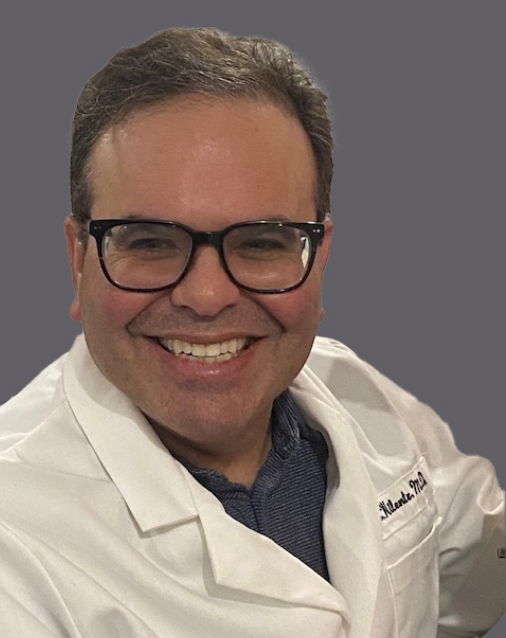
Facing a skin cancer diagnosis might feel daunting, but the good news is that you can successfully overcome most types of skin cancer with the proper diagnosis and clinical intervention. At Feinstein Dermatology, we offer you a comprehensive range of care options, including effective skin cancer treatments, right here in Delray Beach, FL.
Types of Skin Cancer
At Feinstein Dermatology, we offer the latest in diagnosis and treatment for a wide range of skin cancers, from the most common to the rarest forms. Here’s a comprehensive overview:
Melanoma
The most dangerous type of skin cancer, Melanoma, develops in melanocytes, the pigment-producing cells. While it accounts for only a small percentage of skin cancers, it’s responsible for the majority of skin cancer deaths.
Key Characteristics:
- ABCDEs:
- Asymmetry: One half of the mole or growth does not match the other.
- Border irregularity: The edges are ragged, notched, or blurred.
- Color variation: The color is not uniform and may include shades of brown, black, tan, red, white, or blue.
- Diameter: The size is typically larger than 6 millimeters (about the size of a pencil eraser), although melanomas can be smaller.
- Evolving: The mole or growth changes in size, shape, or color over time.
- Risk Factors:
- Sun exposure and tanning bed use
- Fair skin, light eyes, and freckles
- Family history of melanoma
- Personal history of melanoma or other skin cancers
- Numerous moles or atypical moles
- Weakened immune system

Basal Cell Carcinoma (BCC)
BCC is the most common type of skin cancer, often appearing as a pearly or waxy bump, a flat, flesh-colored or brown scar-like lesion, or a bleeding or scabbing sore that heals and returns.
Key Characteristics:
- Pearly or waxy bump
- Flat, flesh-colored or brown scar-like lesion
- Sore that bleeds or scabs and heals repeatedly
Risk Factors:
- Chronic sun exposure
- Fair skin, light eyes, and freckles
- Increasing age
- Previous history of skin cancer
Squamous Cell Carcinoma (SCC)
SCC is the second most common type of skin cancer, typically appearing as a firm, red nodule, a flat lesion with a scaly, crusted surface, or a new sore or raised area on an old scar or ulcer.
Key Characteristics:
- Firm, red nodule
- Flat lesion with a scaly, crusted surface
- New sore or raised area on an old scar or ulcer
Risk Factors:
- Chronic sun exposure
- Fair skin, light eyes, and freckles
- Increasing age
- Previous history of skin cancer
- Exposure to certain chemicals or radiation
- Weakened immune system
Merkel Cell Carcinoma (MCC)
MCC is a rare but aggressive form of skin cancer that typically appears as a flesh-colored or bluish-red nodule.
Key Characteristics:
- Flesh-colored or bluish-red nodule
- Rapid growth
- Firm to the touch
Risk Factors:
- Sun exposure and tanning bed use
- Fair skin
- Weakened immune system
- Advanced age
By understanding the key characteristics and risk factors for each type of skin cancer, you can be more proactive about detecting any suspicious changes in your skin and seeking prompt medical attention. Our board-certified dermatologists are here to guide you through the diagnosis and treatment process, offering personalized care and support.
Skin Cancer Treatment Options
Following a thorough diagnosis, our team of board-certified dermatologists, board-certified plastic surgeons and board-certified Mohs surgeon will collaborate with you to develop a personalized skin cancer treatment plan that best addresses your specific condition. We offer a range of cutting-edge treatment modalities, each tailored to the unique characteristics of your skin cancer:
Electrodesiccation and Curettage (ED&C)
ED&C is a well-established technique primarily used for superficial or small, low-risk skin cancers. This minimally invasive procedure involves:
- Anesthesia: The treatment area is numbed with a local anesthetic to promote your comfort.
- Curettage: A sharp, spoon-shaped instrument called a curette is used to carefully scrape away the cancerous tissue.
- Electrodesiccation: An electric needle is then applied to destroy any remaining cancer cells and cauterize the wound, minimizing bleeding.
ED&C is often a preferred option for lesions in less cosmetically sensitive areas, as it typically leaves a small white scar.
Excision
Excision is a surgical technique that involves removing the entire tumor along with a margin of healthy surrounding tissue. This margin ensures the complete removal of cancerous cells and reduces the risk of recurrence. Excisions can be performed using various techniques, including:
- Simple Excision: This involves removing the tumor and a small margin of surrounding tissue.
- Wide Excision: This removes the tumor and a wider margin of tissue, often used for more aggressive or larger tumors.
Our board-certified dermatologists and board-certified plastic surgeons employ advanced closure techniques to minimize scarring and optimize cosmetic outcomes.
Mohs Micrographic Surgery
Mohs surgery is the gold standard for treating many types of skin cancer, particularly those that are large, aggressive, recurrent, or located in cosmetically sensitive areas. This highly specialized procedure involves:
- Stage 1: Removal of Visible Tumor: The visible tumor is removed under local anesthesia, along with a thin layer of surrounding tissue.
- Stage 2: Microscopic Examination: The removed tissue is immediately frozen, sectioned, and examined under a microscope by our Mohs surgeon.
- Stage 3: Mapping and Removal of Remaining Cancer: If any remaining cancer cells are found, the surgeon precisely maps their location and removes another thin layer of tissue from that specific area.
- Repetition: Stages 2 and 3 are repeated until no further cancer cells are found, ensuring complete removal while sparing healthy tissue.
- Reconstruction: The resulting wound is then carefully repaired using advanced reconstructive techniques to minimize scarring and optimize cosmetic results.
Mohs surgery offers the highest cure rates for skin cancer and is particularly effective for:
- Basal cell carcinoma
- Squamous cell carcinoma
- Some types of melanoma
- Tumors in cosmetically sensitive areas (face, ears, neck, hands, feet, genitals)
- Large or aggressive tumors
- Recurrent tumors
Our team is proud to offer this advanced procedure, led by Dr. Brian Feinstein, a board-certified Mohs surgeon that has performed over 10,000 Mohs surgeries.
How Can I Reduce My Risk Of Developing Skin Cancer?
Protecting your skin from the sun is the most crucial step in preventing skin cancer. Here are some effective strategies:
- Seek shade: Avoid direct sun exposure, especially during peak hours (10 a.m. to 4 p.m.) when UV rays are strongest.
- Wear protective clothing: Cover your skin with lightweight, long-sleeved shirts, pants, wide-brimmed hats, and sunglasses that block UVA and UVB rays. Consider clothing with a UPF (Ultraviolet Protection Factor) rating.
- Use sunscreen: Apply a broad-spectrum sunscreen with an SPF of 30 or higher to all exposed skin daily, even on cloudy days. Reapply every two hours, or more often if swimming or sweating. Don’t forget your lips, ears, and the tops of your feet.
- Avoid tanning beds: Tanning beds emit harmful UV radiation that significantly increases your risk of skin cancer.
- Perform regular skin self-exams: Get to know your skin and look for any new or changing moles, growths, or other unusual marks.
- Schedule professional skin exams: See a board-certified dermatologist for a comprehensive skin check at least once a year, or more often if you’re at high risk.
- Choose sunless tanning options: If you desire a tan, consider using self-tanning products or spray tans. These options offer a safer alternative to sunbathing or tanning beds.
- Educate yourself: Learn about the different types of skin cancer, their risk factors, and early warning signs.
By adopting these sun-safe habits and being proactive about your skin health, you can significantly reduce your risk of developing skin cancer and ensure a lifetime of healthy, beautiful skin.
Recovery
Depending on the type of treatment you receive, recovery from skin cancer treatment may take anywhere from several days to a few weeks. Our medical assistants will provide full aftercare instructions to ensure you heal properly and provide maximum comfort following your procedure.
Skin Cancer Treatment FAQs
Meet Our Board-Certified Dermatology Team
At Feinstein Dermatology in Delray Beach, FL, our commitment is patient satisfaction and loyalty. We are defining the new standard in customer experience and outcomes, striving to lead by example for others to follow. With a dedicated patient base of over thirty-five thousand (35,000) individuals who have entrusted us with their dermatological and cosmetic needs, we have earned our reputation as a leading provider in the field.
Our team comprises dedicated professionals, including board-certified dermatologists, a board-certified Mohs surgeon, and a board-certified plastic and reconstructive surgeon. We invite you to experience the exceptional care and dedication that defines Feinstein Dermatology.
LEADERS IN DERMATOLOGY & COSMETICS
Meet Your Providers
Feel Good About Your Skin
At Feinstein Dermatology & Cosmetic Surgery, we understand that your skin is more than just an organ; it reflects your well-being and confidence. Our dedicated team of board-certified dermatologists and skincare specialists is committed to guiding you on a transformative journey toward feeling fantastic in your own skin. With a personalized approach to dermatological and cosmetic care, we aspire to be your trusted partners for a lifetime of radiant, healthy skin. Take the next step towards embracing your confidence with advanced skincare solutions, cosmetic treatments, or skin cancer care in Delray Beach, FL. Schedule a consultation for skin cancer treatment today at (561) 498-4407.











